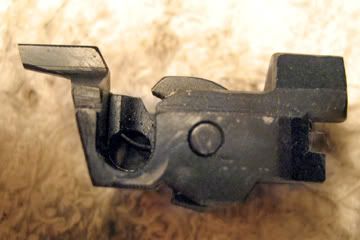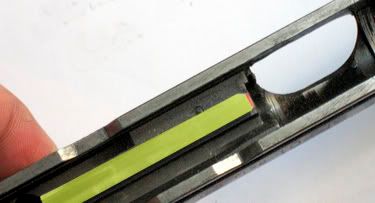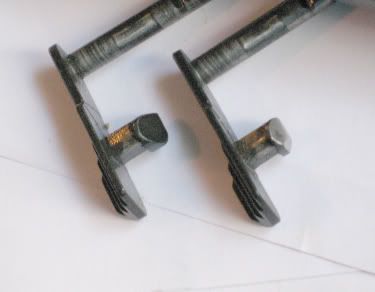Resolving Common SP01 Break-In Issuesby eerw and double pedro
The following information is a compilation of knowledge gleaned from several posters on this board. It is intended to address the most common problems encountered with a new SP01. It is not intended to address all possible malfunctions, however, following these recommendations should help avoid or resolve most common malfunctions during break-in of a new SP01. Use at your own risk, your results may vary.
Initial Steps for Good Function 1) Cleaning and Lubrication ? Make sure your pistol is clean and well lubricated - especially the rails (use a quality lubricant suitable for firearms). Make sure your magazines are also clean and in good working order: disassemble, inspect, remove any oil or preservatives, replace any worn or defective parts and correctly reassemble.
2) Chamber-Check Ammunition ? Remove the barrel from your pistol and make sure your ammunition (every round to be fired) fully seats into the chamber and easily drops out. If the round will not fully seat into the chamber, it may be improperly sized or have an OAL that is too long for your barrel (i.e. the bullet may be contacting the lands of the rifling before the case mouth seats in the chamber).
3) Use a Lighter Recoil Spring ? Within a reasonable range, the rating of the recoil spring shouldn?t affect function so long as the pistol is adequately cleaned and lubricated, and the ammunition is sufficiently powerful. However, problems can occur when the recoil spring weight is poorly matched to the power of the ammunition and/or the level of fouling/lubrication present. The flat-wound factory recoil spring is fairly heavy (approximately 18 lbs) and is best suited to ensure function under adverse conditions using powerful (defensive) loads. When using lighter loads, a heavy recoil spring may contribute to malfunctions (e.g. extraction/ejection), especially during break-in. For this reason, use a lighter recoil spring (e.g. 14 lbs) during break-in and for ?routine? range use, at least until the pistol is broken-in. After break-in, an SP01 should reliably function even with minor loads using a 10 - 18 lb recoil spring. Using a lighter recoil spring may create feeding or battery problems while a heavier spring may require more powerful loads to fully cycle the slide, especially if the pistol is dirty or under lubricated.
Common Issues/Modifications to Improve FunctionThe following modifications may help resolve certain problems that persist even after the ?Initial Steps for Good Function? (above) have been followed.
1) Stove Pipes and Erratic Ejection ? This is a common problem, especially with a new SP01. Symptoms include brass ejected straight up and even back at the shooter. Changing the angle of the bevel on the ejector tip often improves ejection ? the ejector tip should have the ?point? at the top of the ejector, rather than at the bottom. The following photo (courtesy of eerw) illustrates the modified ejector tip.

2) Partial Feeds and Double Feeds ? When chambering a round, the underside of the slide behind the breech face can drag on the next round at the top of the magazine. This can partially dislodge the next round from the magazine. The partially fed round may end up sitting with its nose at the bottom of the feed ramp and interfere with the extraction/ejection of the chambered round. In addition, the partially fed round can cause the magazine to hang if you attempt to drop the magazine. To alleviate these problems, the lower (leading) edge of breech face should be beveled and the underside of the slide behind the breech face should be polished. These modifications are shown in the following photograph (courtesy of eerw). The area to be beveled is shown in red and the area to be polished is shown in yellow.

3) Slide Stop Induced Feed Problems ? It has been suggested that the tip of the slide stop can interfere with a round being chambered as it approaches the feed ramp. The tip of the slide stop can be filed shorter to reduce the chance of this occurring. The following photo (coutrtesy of eerw) shows the unmodified slide stop (left) and the modified version (right).
